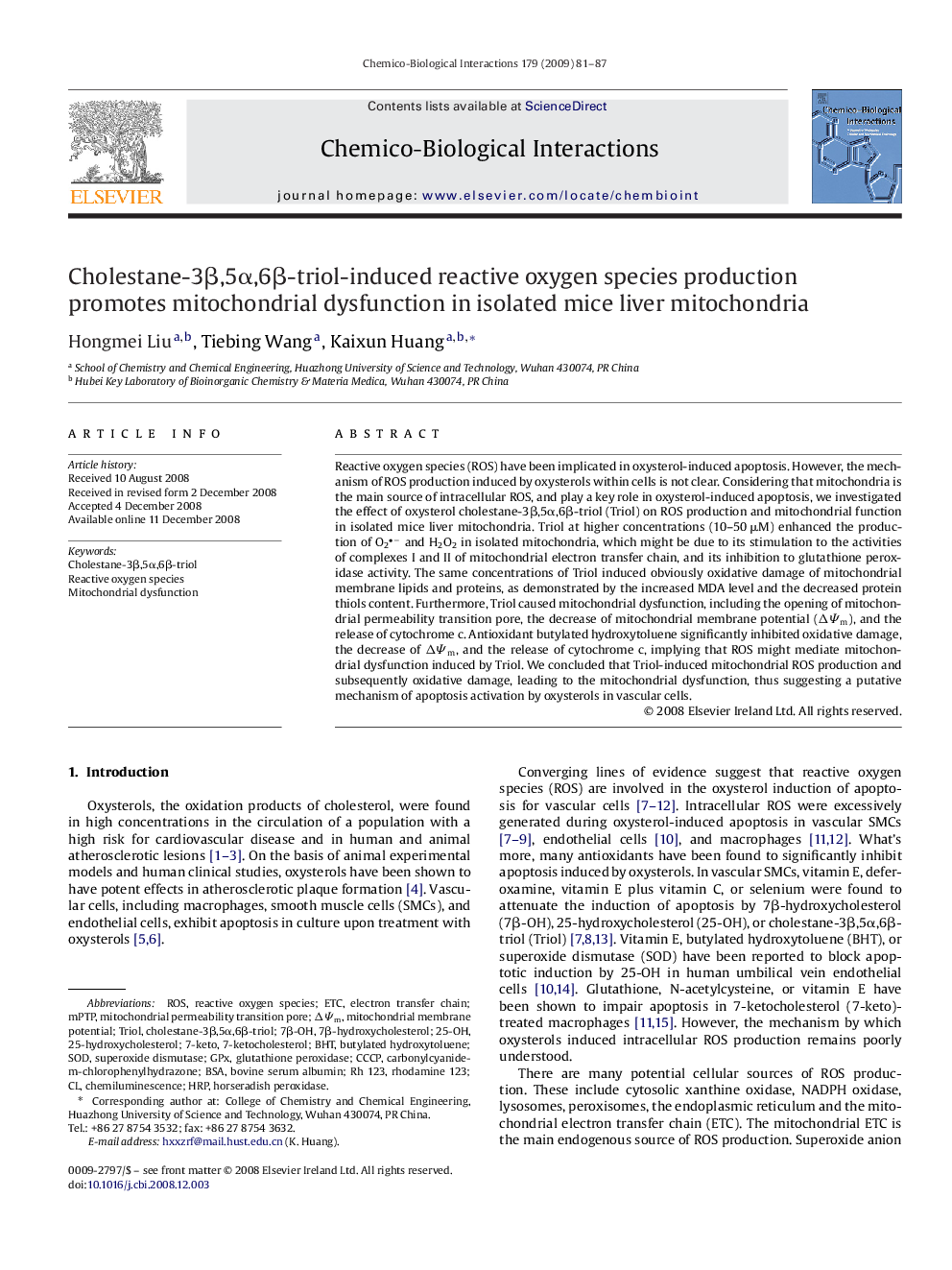| Article ID | Journal | Published Year | Pages | File Type |
|---|---|---|---|---|
| 2582211 | Chemico-Biological Interactions | 2009 | 7 Pages |
Reactive oxygen species (ROS) have been implicated in oxysterol-induced apoptosis. However, the mechanism of ROS production induced by oxysterols within cells is not clear. Considering that mitochondria is the main source of intracellular ROS, and play a key role in oxysterol-induced apoptosis, we investigated the effect of oxysterol cholestane-3β,5α,6β-triol (Triol) on ROS production and mitochondrial function in isolated mice liver mitochondria. Triol at higher concentrations (10–50 μM) enhanced the production of O2− and H2O2 in isolated mitochondria, which might be due to its stimulation to the activities of complexes I and II of mitochondrial electron transfer chain, and its inhibition to glutathione peroxidase activity. The same concentrations of Triol induced obviously oxidative damage of mitochondrial membrane lipids and proteins, as demonstrated by the increased MDA level and the decreased protein thiols content. Furthermore, Triol caused mitochondrial dysfunction, including the opening of mitochondrial permeability transition pore, the decrease of mitochondrial membrane potential (ΔΨm), and the release of cytochrome c. Antioxidant butylated hydroxytoluene significantly inhibited oxidative damage, the decrease of ΔΨm, and the release of cytochrome c, implying that ROS might mediate mitochondrial dysfunction induced by Triol. We concluded that Triol-induced mitochondrial ROS production and subsequently oxidative damage, leading to the mitochondrial dysfunction, thus suggesting a putative mechanism of apoptosis activation by oxysterols in vascular cells.
